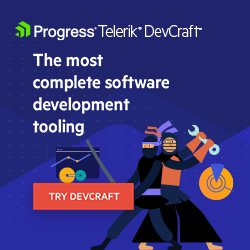Building Psychology Role Models from Personas to Build Better Software

Creating role models in your mind can help you consider your digital product from new angles to better serve users.

Image from Microsoft Copilot prompt
In this post, I’ll discuss my experience building personas for my products and extending those personas to role models. Personas are a psychological term that describes how we construct mental profiles of individuals in our minds with their personalities. The role models are archetypal ideals that complement and motivate particular personas. Role models go beyond individuals to provide a methodical framework for understanding actions, motives and decisions.
When we develop a product, we need to create a target public and build a persona. The persona is made by giving an imaginary person an age, a gender and social and economic circumstances. We can create some personas to start selling our products and/or services to these personas. This is a marketing strategy.
While building software, I design mainly for the specific model of public lawyers. I have a business that produces software for law companies that could cause harmful consequences if the software fails, including millions of dollars in potential loss from lawsuits.
I’ll explain how I use persona models during development of such software. It is a mental exercise you might already be familiar with.
What goes on in the developer’s mind while coding?
- It starts with the language programming role model. We imagine how the machine will process our code and how to get it to correctly accomplish the requirements. We have the grammar and lexical logic of the programming in mind.
- Secondly, we imagine the solution’s environments, whether it works on desktop, web, server-side, API, cloud, etc., and how it will work in production.
- After that, we imagine how the data produced will be processed and consumed as a user interface or API and how the software will act in the natural environment.
Most of our developers are good at these three steps, but there are others to consider.
I use the following steps to help me finish my work and avoid problems. I build role models of different types of users: a user who knows nothing about IT, a user who doesn’t like IT and a user who hates IT and/or is lazy.
So, I “load” these role models into my mind and start thinking about them one by one while using my interfaces, mimicking the behavior of the current role model and asking myself, as a developer/UX professional, what I could do better to help this role model finish their task successfully. Likewise, you can “talk” with your role model as a real person—ask a question from yourself as the developer and answer as the persona you have in mind. With time, they will start giving you feedback and ideas like a real person. This is the magic of the role models.
Creating role models from scratch is hard, so you can base them on people you already know. It’s valid to create one from your aunt who hates technology, and perhaps one based on a coworker who loves it. From there, you can play around with the picture you have of them in your mind. Maybe your model is less clever or has stronger opinions about a particular aspect. Establish a clear idea of your personas before moving on.
Next Steps
Next, consider these areas of UI from the perspective of each of your personas:
- What will the end user understand from the interface? It would help if you guided them in considering what they need to do in order to perform the task correctly. Ask your role model in your mind.
- It would help if you imagined what the role model would understand about the forms’ error validation messages, tips and labels—the big picture and the details.
- You need to imagine the user’s attitude toward accomplishing the task. Will they tap/click the right button and do it in the correct sequence?
Is this enough? I often imagine the worst-case consequences in the work I do, like someone losing something because of my software and as a result pursuing legal action against me.
I even go so far as to imagine myself giving testimonial to a judge. I want to feel with certainty that I have done everything with care. As I said before, this line of thinking has caused me to discontinue development of some software services because there was a high possibility of unpredictable errors, putting the customer at too much risk.
But sometimes we need to deliver an MVP or finish development and we aren’t the final decision-makers. So, what do I do if I see that a bad situation could happen? I pass along two options to solve the problem to the owners and/or stockholders so they can consider the best solution.
In development, we can make documentation on the Git commits and write comments about our concerns. But, please, be careful not to leave incriminating comments. Noting concerns in the code can help the following colleagues find a solution.
Conclusion
I’ve been using this role model approach to develop and validate my software for a long time. At first, I didn’t know the name for it, or that I was using the psychology role model, only discovering it in my postgraduate studies in neuroscience.
Building a persona is not enough. You need to recreate the minds of your audience and help them accomplish their tasks without suffering or avoiding errors, leading them to success with your solution.
The information provided on this blog does not, and is not intended to, constitute legal advice. Any reader who needs legal advice should contact their counsel to obtain advice with respect to any particular legal matter. No reader, user or browser of this content should act or refrain from acting on the basis of information herein without first seeking legal advice from counsel in their relevant jurisdiction.

Jefferson S. Motta
Jefferson S. Motta is a senior software developer, IT consultant and system analyst from Brazil, developing in the .NET platform since 2011. Creator of www.Advocati.NET, since 1997, a CRM for Brazilian Law Firms. He enjoys being with family and petting his cats in his free time. You can follow him on LinkedIn and GitHub.

